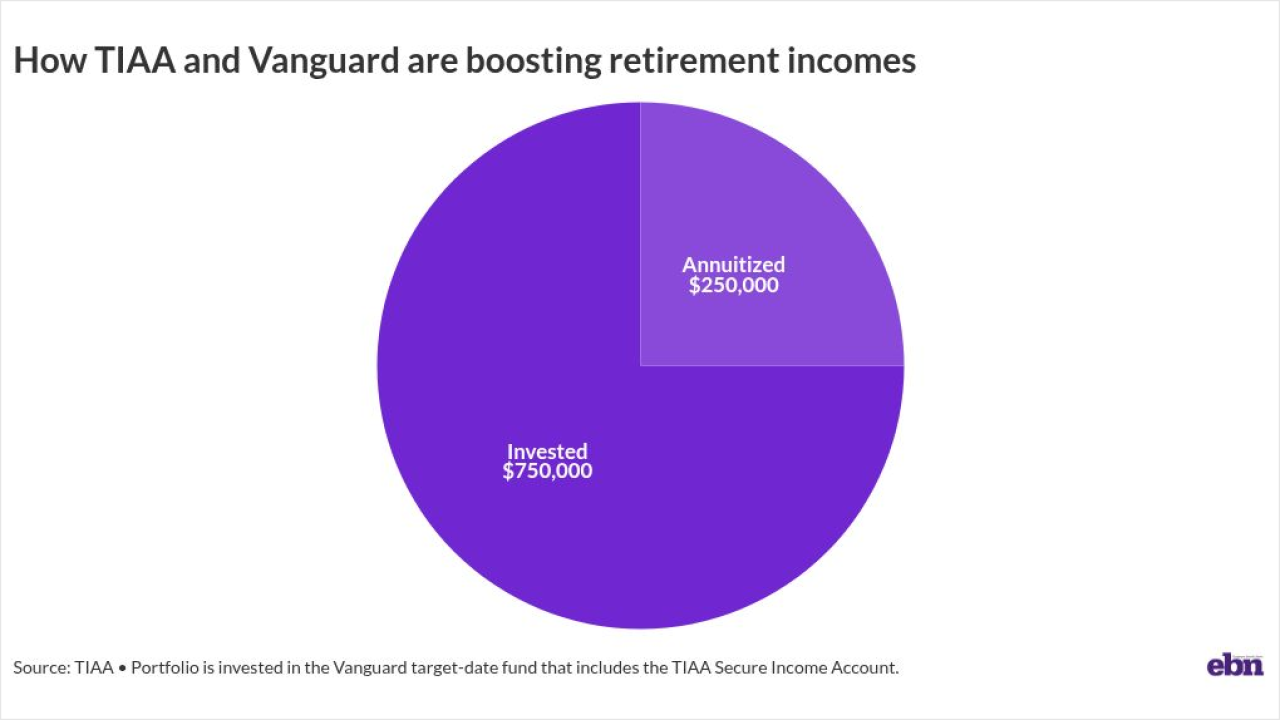Highly personalized and dynamic communication with employees is critical to creating a health promotion initiative with impact and results. Is HR tech up to the task? For some insight, Employee Benefit News recently spoke to Stephen Mitchley, the chief strategy officer for The Vitality Group, a health and wellness solutions provider. Edited excerpts of that conversation follow.
Employee Benefit News: How can information technology best be applied to promoting the health of the employee population?

Stephen Mitchley: A lot of the technology traditionally has revolved around scheduling resources and providing a more impactful education on health issues. But technology today also can be used very effectively to incentivize behavior. In this arena you need to be clear about the “why” — people often need compelling reasons to do things to improve their health that involve a behavior change, and you need to make it as simple as possible for them to do so.
EBN: With respect to the “why,” what messages are people not already familiar with in terms of the importance of maintaining good health and what it takes to do so?
Mitchley: Everyone knows that you should exercise, and that smoking and being obese are bad for you. The key is taking that knowledge and turning it into something that’s really relatable. That requires a skill, and technology helps us do that.
EBN: How so?
Mitchley: In the traditional approach, you give a person a health risk assessment. They show areas for improvement. But most people will greatly discount any expectation of the future damage that a particular risk is causing, because most of us are pretty optimistic by nature. If you’re overweight, you think, “Well, I’m not that overweight, I’m not as bad as the guy next door, and I can address this at some point.” You’re not thinking all the morbid thoughts about what this is doing to your body.
EBN: How do you turn that self-deception around with technology?
Mitchley: You can engage people in a kind of “conversation” using technology. We have something we call your “vitality age.” You input your chronological age and key health metrics, and it will show you an adjusted age based on your health risks. It’s very personalized and brings something that’s meaningful in the present. If I’m 50 but the system tells me that my adjusted age is really 57 based on my lifestyle, that gets my attention. That’s a powerful use of technology.
EBN: You add incentives for behavior change as well. How does that work?
Mitchley: Incentives in our context isn’t, “You’ll get $50 if you do A, B and C.” Rather, it’s that “You have access to the following healthy lifestyle, you have access to the following rewards, and here is an opportunity to earn them.” Both of those are enabled by showing health risks in a personalized context, and then making it really, really simple for the employee to hook into whatever they need and to get feedback on how they’re doing, and then physically get the fruits of their labor.
EBN: I assume it’s not just a one-and-done proposition?
Mitchley: Correct, it’s ongoing. And we can use some data from wearable devices to supplement and update verified biometric information. Instead of just providing static information, we try to make it very conversational by applying motivational interviewing techniques, instead of leaving employees to their own devices, pardon the pun. With ease of connectivity wearables can create a sense of intimacy because you are no longer just looking at a webpage. You’re now on the wrist, around the chest, you’re creating a way of connecting to the member that becomes very seamless. They connect once, everything flows, and you give them the feedback.
EBN: So wearables are a pretty big part of the program?
Mitchley: We see these devices and partnerships as providing a constant stream of information where a member doesn’t really have to do too much to communicate. Otherwise you build up inertia around these things; members lose interest, and hope.
EBN: What incentives are employers using now to motivate participation to supplement the intrinsic rewards?
Mitchley: It varies. It could be trips, half-priced hotels, and discounts on health benefit cost-sharing. Earning points that you get to redeem and spend at a very posh mall or vouchers to buy a wearable device. Most employers have a range of incentives that work for their culture. But there’s is a big difference between saying to somebody, “Do your HRA and you’ll get $100,” which employees might do begrudgingly, and asking employees to do some things that improve their health that also give them credit towards the reward. It sounds kind of the same but it’s really a different approach; the person thinks, “Well, was that really worth $100 of my time.” And then with devices wrapped around it, hopefully have some ah-ha moments. It’s along a broader narrative about their own personal journey and their own personal health.
EBN: What attributes make for a good, or bad wearable device?
Mitchley: The kind that are less useful are those that requires too much effort to make it function, and those that just provide the same information over and over, under the guise of educating you. I stay away from apps that break my thumbs just to get some information and the sliver of a hope that it will tell me something I don’t know already. The apps that are successful are ones that can very effortlessly connect with you, get information through your actual participation, and then play back little insights on how you are doing and catch you when you are not quite getting to where you wanted to be.
EBN: How can employers get generalized HIPAA-compliant information from these systems about employee health in a way they can put it to use?
Mitchley: You want more than just general numbers about how many people are participating or how many people are losing weight. Powerful information for the employer is trends within the population, which cohorts are lagging and which tactics could be applied to those cohorts to improve results, either through messaging, through support at work, incentives, or a combination of all three.
EBN: Can you give an example of what that looks like?
Mitchley: We had a group that seeing fantastic results with their blue collar and white collar workers. But there was one really stubborn cohort, which was their sales staff, who were paid very well. So, the financial incentives didn’t inspire them to do anything. We realized we needed a different approach. Since they were highly competitive people, the communication to them was adapted to make it into more of a competitive challenge, and that increased their engagement substantially. Sometimes you just have to use trial and error to find the right approach.
EBN: What’s next on the horizon with the technology?
Mitchley: We’re moving towards a system like Amazon’s that learns what you’re looking for based on your previous interactions with the site. It knows what you’re looking for and remembers you every time you come back, and tailors messages accordingly. The industry is there yet, but it’s moving quickly in that direction.
EBN: How would that capability be put to use?
Mitchley: OK, suppose I — the system — knows that you have absolutely no interest in quitting smoking, but also knows that you are interested in getting more active. Putting messaging and support around the latter is going to succeed better than a message that tries to get you into a nonsmoking program.
EBN: Despite its growing sophistication, the technology cannot be the driver of the health promotion effort itself, I assume.
Mitchley: Definitely not. You need to begin with a strategy, and the strategy has to evolve. You don’t want to put the technology cart before the horse. Also, just from a technology perspective, employers can create messages that are deployed on their HR platform, and have a hierarchy that can configure their own wellness vendors within that platform.






